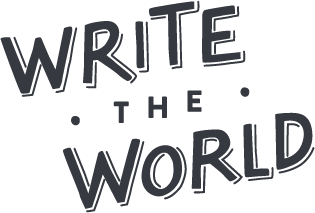Writing about food highlights the narratives, memories, and cultural history that can be present...
Culturally responsive teaching incorporates and validates the diversity of students’ cultures, perspectives, and identities. As our students become more diverse, the need to create culturally responsive classrooms increases. As an educator and author, I have witnessed the need for classrooms that embrace inclusive history, provide representation, and support the learning and identity of students. Ensuring that educators know what culturally responsive pedagogy looks like, and how to implement it, is important, if we want all classrooms and learning spaces to be equity and student centered.
Some of the lessons I have learned from my students, fellow colleagues, and mentors resonate deeply when I think about applicable ways to work towards culturally responsive and community responsive learning spaces. My recent research that involved gathering the oral histories of Black female educators in Mississippi who taught between 1954-1971, offered additional guidance and lessons that can help us navigate today’s classrooms.We certainly have much to learn from the past, and below, I compile a few of the lessons I have gained that may help shape classrooms that both honor and celebrate perspectives, histories, communities, and stories:
8 Tips to Build Culturally Responsive Classrooms
1. Listen to the lessons of the past.
Our ancestors, elders, and former educators navigated through difficult times. Embedded in their stories are lessons that we should consider as we shape learning spaces and pedagogy. Some of the ways we can listen to the lessons of the past are through oral histories, previous efforts of groups such as the Student Non-Violent Coordinating Committee (SNCC), read and learn about people such as Ellie Dahmer, Joyce Ladner, and the many others who helped to shape the foundation of education and activism.2. Teaching inclusive history matters.
Allowing students to learn about multicultural history is paramount. Understanding and respecting our differences is grounded in also looking at our histories in an honest and accurate manner. Understanding Black History, Asian American and Pacific Islander (AAPI) history, and others offer valuable knowledge and information for students. Explore places such as Asian Americans Advancing Justice, the University of Illinois TEAACH (Teaching Equitable Asian American Community History) program online learning modules:https://teaach.education.illinois.edu/resources, the work of Dr. Derrick Alridge with Teacher’s in the Movement, the work of Historian Dr. Christopher Span, etc. These resources about various histories, can expand our own knowledge, ultimately making us better informed.3. Listen to students.
Centering the voices and experiences of students helps to create spaces where students feel valued and seen. Some of the ways you can create student centered classrooms include Socratic seminar, time for reflection and discussion, etc.4. Mentorship can shift the trajectory of a student or mentor’s life.
Building relationships, considering a whole child approach (attending to a student’s academic, social, emotional, and whole person). Additionally, mentorship connects us to families and the community, and sets a precedent for how we expect students to treat one another in the classroom.5. Culturally responsive curricula need to be consistently implemented.
Offering students the opportunity to analyze and inquire, share in perspective taking, and bearing witness to others’ experiences and lives helps to create a culture of empathy, acceptance, and appreciation. Inclusive curricula illuminate marginalized voices and histories, a world perspective, and a multicultural lens–offering students the opportunity to see themselves and to appreciate others. This involves using varied texts, considering various learning modalities, and creating space for inquiry-based learning.6. Culturally responsive classrooms are a great step but moving it to the next level involves creating community immersive classrooms.
7. Unlearning and relearning are vital pieces to culturally responsive pedagogy.
8. Stories are bridges to connections.
Through intentional and consistent practices, we can create classrooms that help all student reach their highest potential. For more information or tools, please feel free to reference The Magnitude of Us: An Educator’s Guide to Creating Culturally Responsive Classroom, Teacher’s College Press, 2024.
Dr. Marlee Bunch is an interdisciplinary educator, author, researcher, and lifelong learner. Her research examines the oral histories of Black female educators in Hattiesburg, Mississippi who taught between 1954-1971, and the implications that desegregation had on their lives and careers. She received her doctoral degree from the University of Illinois in 2022 in Education/Policy/Organizational Leadership. Additionally, she has a master’s in education (MEd), a Masters in Gifted Education (MS), a Bachelors in English, a certification in Diversity/Equity/Inclusion, and a certification in ESL (English as a Second Language). Bunch has been an educator for 17+ years and is the founder of the un/Hush teaching framework. You can learn more about her work at marleebunch.com or amazon.com.





